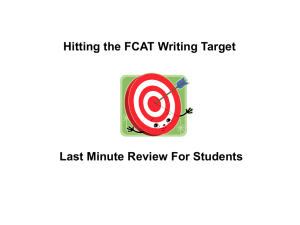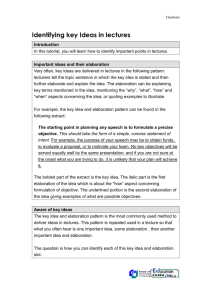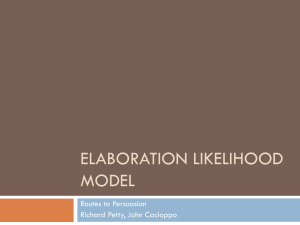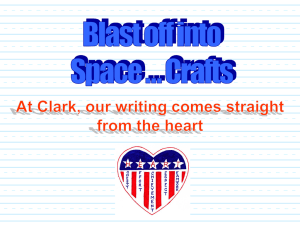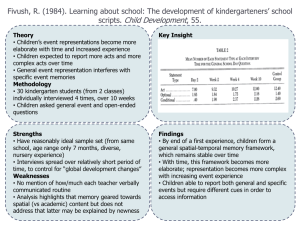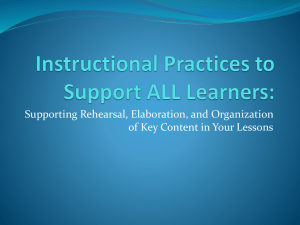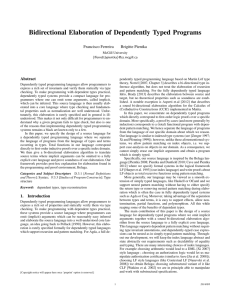Effective Writing: Support & Elaboration Lesson Plan
advertisement
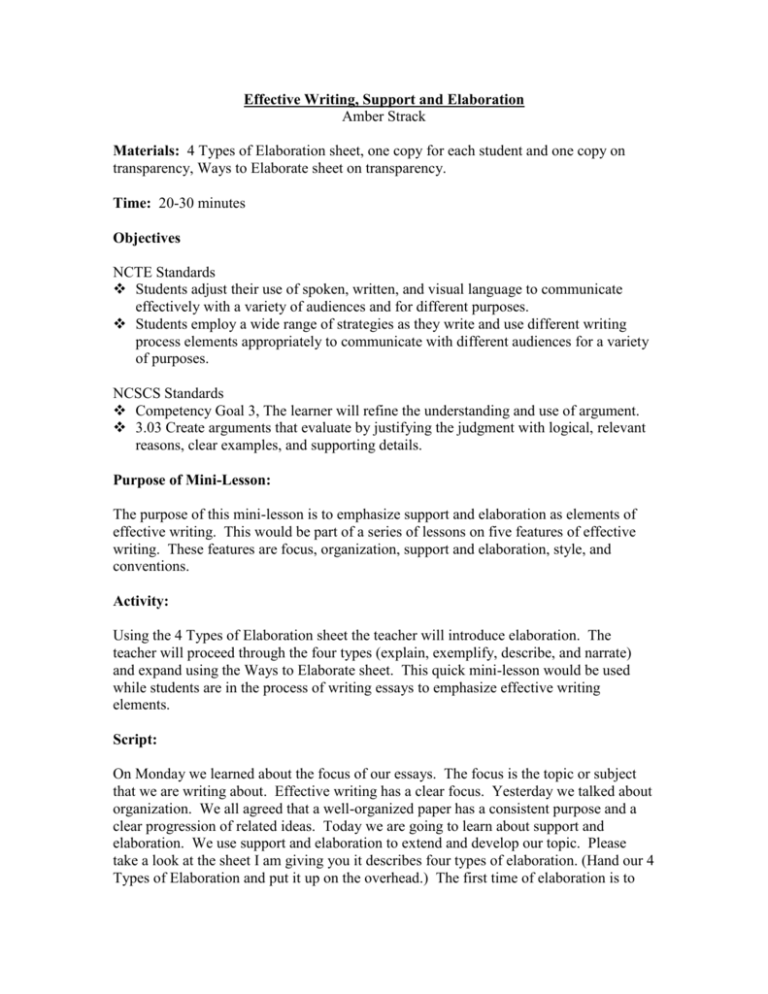
Effective Writing, Support and Elaboration Amber Strack Materials: 4 Types of Elaboration sheet, one copy for each student and one copy on transparency, Ways to Elaborate sheet on transparency. Time: 20-30 minutes Objectives NCTE Standards Students adjust their use of spoken, written, and visual language to communicate effectively with a variety of audiences and for different purposes. Students employ a wide range of strategies as they write and use different writing process elements appropriately to communicate with different audiences for a variety of purposes. NCSCS Standards Competency Goal 3, The learner will refine the understanding and use of argument. 3.03 Create arguments that evaluate by justifying the judgment with logical, relevant reasons, clear examples, and supporting details. Purpose of Mini-Lesson: The purpose of this mini-lesson is to emphasize support and elaboration as elements of effective writing. This would be part of a series of lessons on five features of effective writing. These features are focus, organization, support and elaboration, style, and conventions. Activity: Using the 4 Types of Elaboration sheet the teacher will introduce elaboration. The teacher will proceed through the four types (explain, exemplify, describe, and narrate) and expand using the Ways to Elaborate sheet. This quick mini-lesson would be used while students are in the process of writing essays to emphasize effective writing elements. Script: On Monday we learned about the focus of our essays. The focus is the topic or subject that we are writing about. Effective writing has a clear focus. Yesterday we talked about organization. We all agreed that a well-organized paper has a consistent purpose and a clear progression of related ideas. Today we are going to learn about support and elaboration. We use support and elaboration to extend and develop our topic. Please take a look at the sheet I am giving you it describes four types of elaboration. (Hand our 4 Types of Elaboration and put it up on the overhead.) The first time of elaboration is to explain. When you explain you tell what you mean. (Read 1st example) (Call on a student) How would you explain what a cookie is? (Accept reasonable answers, sweet treat, round, chocolate, oatmeal, etc.) Another type of elaboration is to exemplify or give an example. We will do that right now, (Call on a student) please read the example for number two now. Here is another example. An Oreo is an example of a type of cookie. The third type is to describe. When you describe you tell how something looks, tastes, smells, sounds, or feels. Let’s take a minute and describe an Oreo using all of these elements. I know that Oreos taste good, and are round. Lets see if we can come up with more vivid descriptive words. (Take a few minutes to list descriptive words like dark brown, chocolatey, crunchy, rough, smooth, etc.) (Praise particularly strong descriptive words) The final example of elaboration is narrate or share a personal story to tell what you mean. Here is my story, I love Oreos, they smell chocolatey and sweet. They melt in my mouth after I dunk them in my milk. My grandma always had Oreos at her house. I remember sitting at her table feeling so grown up with my big red plate of cookies and a gigantic glass of milk. My grandma made me feel like the most special little girl in the world. Effective use of specific details strengthens the power of your reader’s response. Can we all agree that the sentence my grandma gave me cookies is not as vivid as my story about eating Oreos at my grandma’s house? I have another sheet that talks about ways to elaborate. (Put Ways to Elaborate sheet up on overhead) When you elaborate you explain what you mean. All day I have been elaborating about elaboration! When you are trying to elaborate ask yourself questions like how and why? Many times when you elaborate you give examples. Some people use cause and effect or compare and contrast when they elaborate. Some people use statistics to support their opinions. Other people tell about a personal experience or make up a short scenario. When you elaborate it helps to use apt adjectives, specific nouns, and vivid verbs. All of these things help you to describe. Finally, use figurative language. Possible Extension: I am now going to hand you each a piece of candy. Use as many of the elaboration techniques that we have covered to write a paragraph supporting the merits of this candy. You have five minutes to write now and can write more at the end of class. Don’t forget to explain, exemplify, describe, and narrate. Follow Up with lessons on style, conventions, or an entire lesson on descriptive words.
